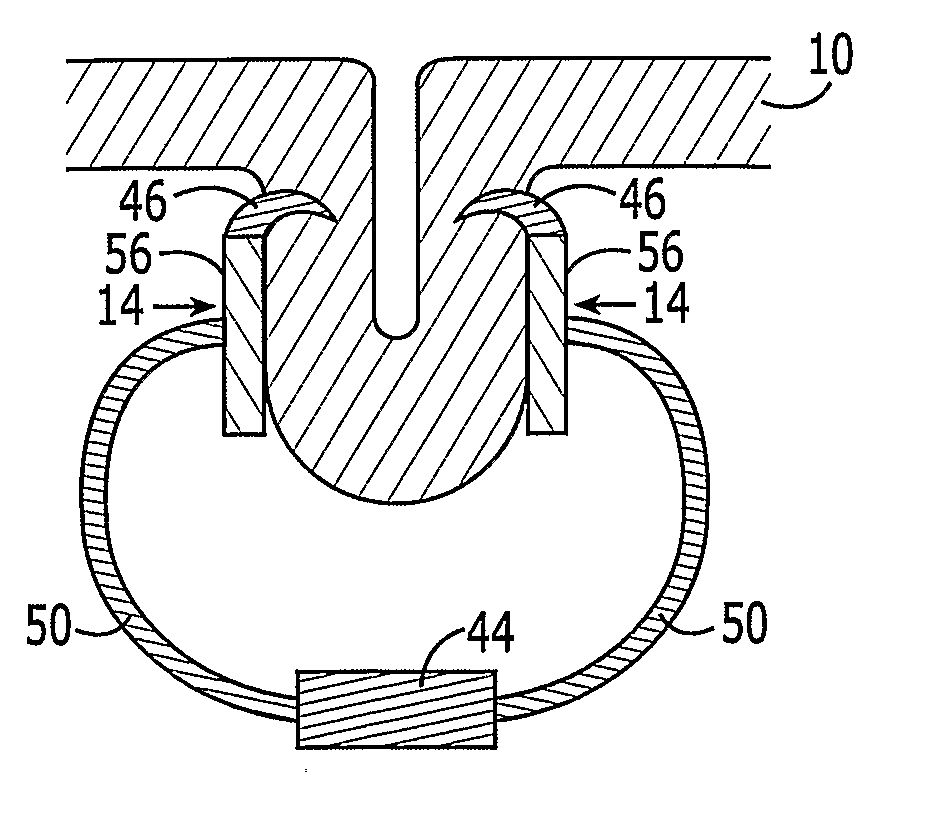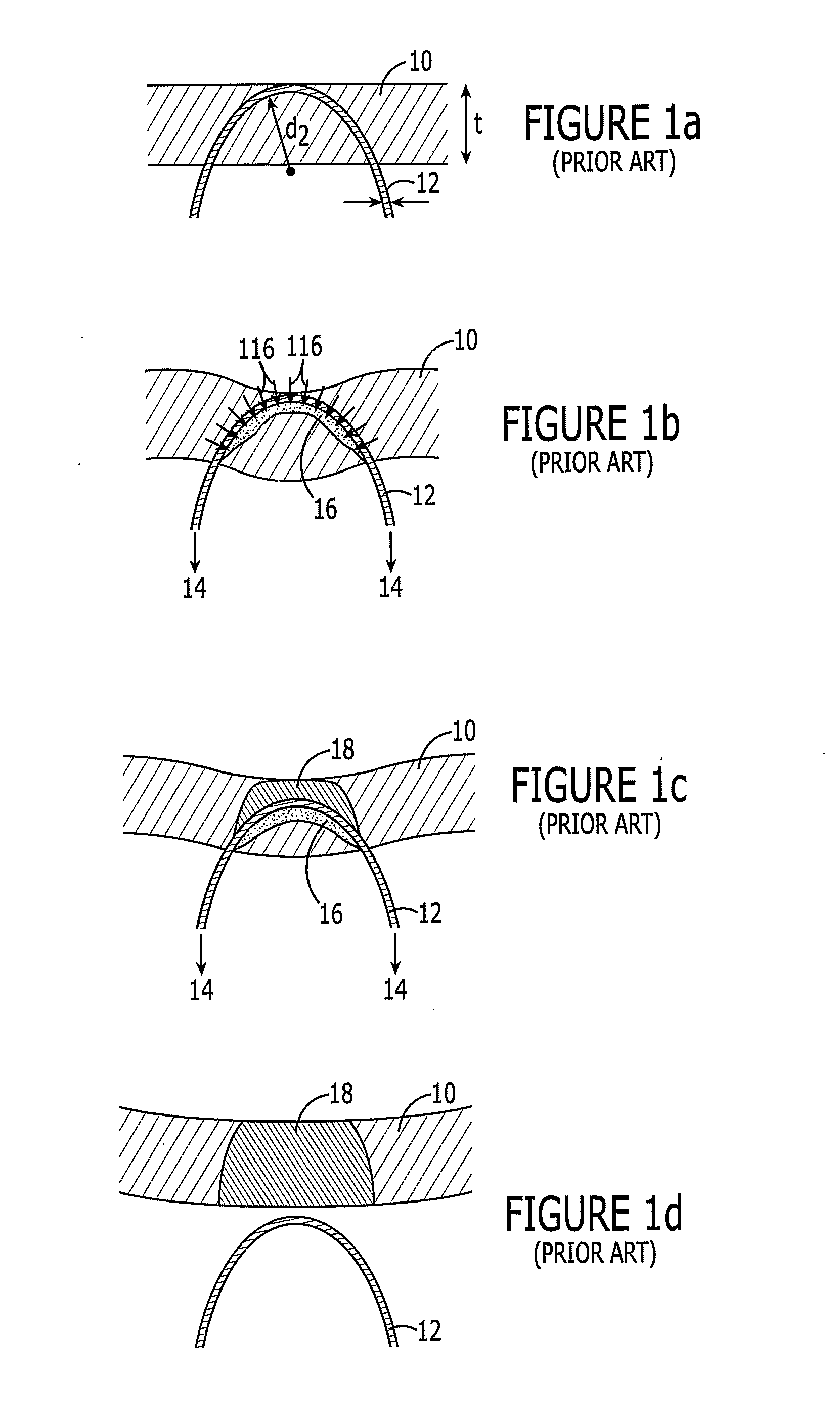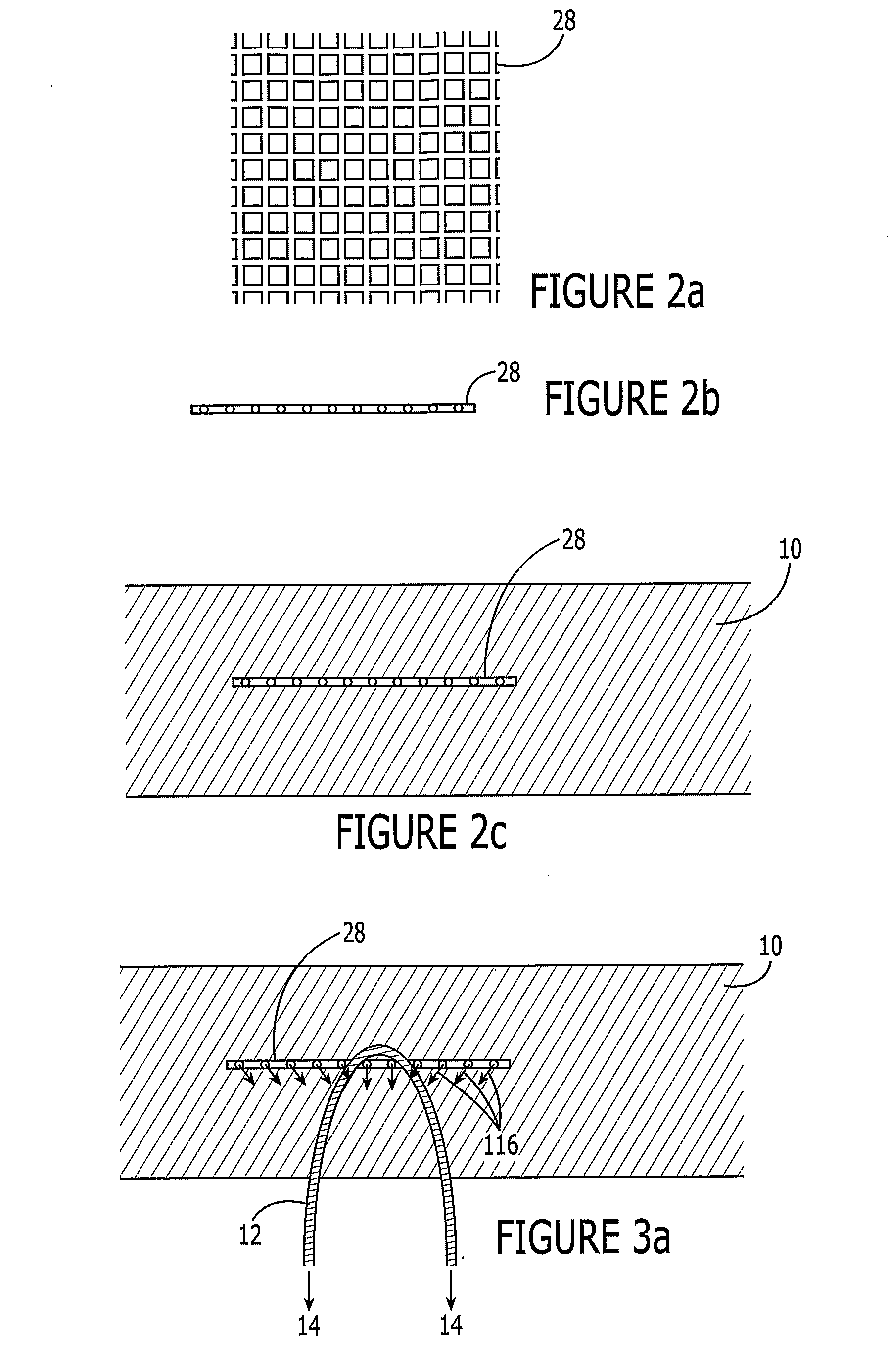Soft Tissue Anchoring Methods and Devices
a soft tissue and anchoring technology, applied in the field of surgical procedures, can solve the problems of wall-to-wall scarification, the sewn seam is subject to significant stress, and the technique often does not hold up over tim
- Summary
- Abstract
- Description
- Claims
- Application Information
AI Technical Summary
Benefits of technology
Problems solved by technology
Method used
Image
Examples
Embodiment Construction
[0057]The present invention relates to methods and devices for soft tissue securement, and, in particular, to novel anchoring elements and deployment thereof which enable reliable securement of soft tissue to other tissue or to a foreign body.
[0058]Before describing elements of the present invention, a brief description of prior art devices and methods will be presented. FIG. 1 shows a typical prior art securement device in use with a tissue mass. In FIG. 1a, tissue securement device 12 is shown traversing through tissue mass 10. By way of example, tissue securement device 12 could be a suture placed with a curved needle, or it could be a wire-based anchor such as a staple, helical anchor or shape memory alloy anchor. In FIG. 1b, forces 14 which are exerted on tissue securement device 12 cause compressive forces 116 on the portion of tissue mass 10 indicated as the zone of compression 16. If the resulting pressure exerted by tissue securement device 12 onto zone of compression 16 is...
PUM
 Login to View More
Login to View More Abstract
Description
Claims
Application Information
 Login to View More
Login to View More - R&D
- Intellectual Property
- Life Sciences
- Materials
- Tech Scout
- Unparalleled Data Quality
- Higher Quality Content
- 60% Fewer Hallucinations
Browse by: Latest US Patents, China's latest patents, Technical Efficacy Thesaurus, Application Domain, Technology Topic, Popular Technical Reports.
© 2025 PatSnap. All rights reserved.Legal|Privacy policy|Modern Slavery Act Transparency Statement|Sitemap|About US| Contact US: help@patsnap.com



